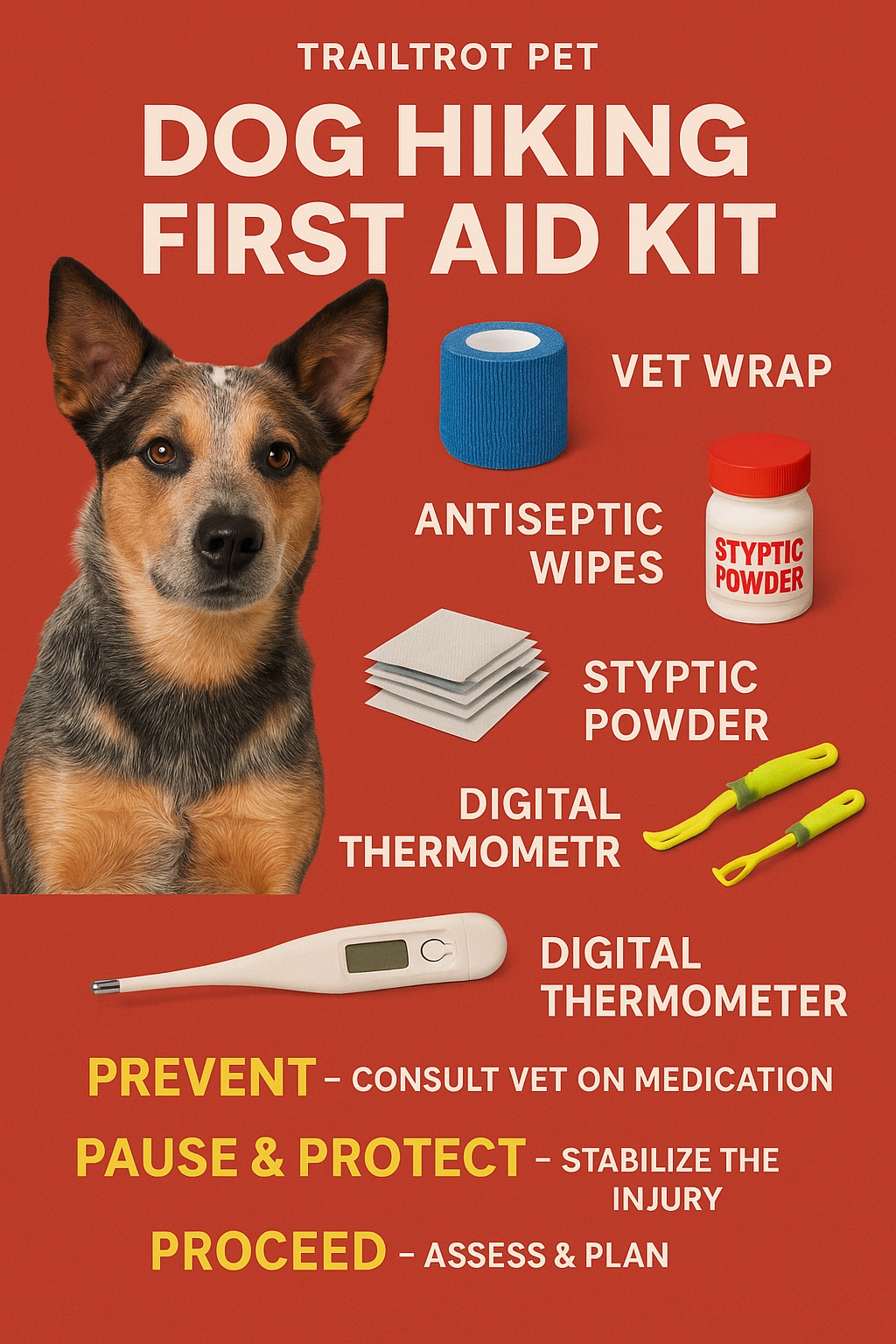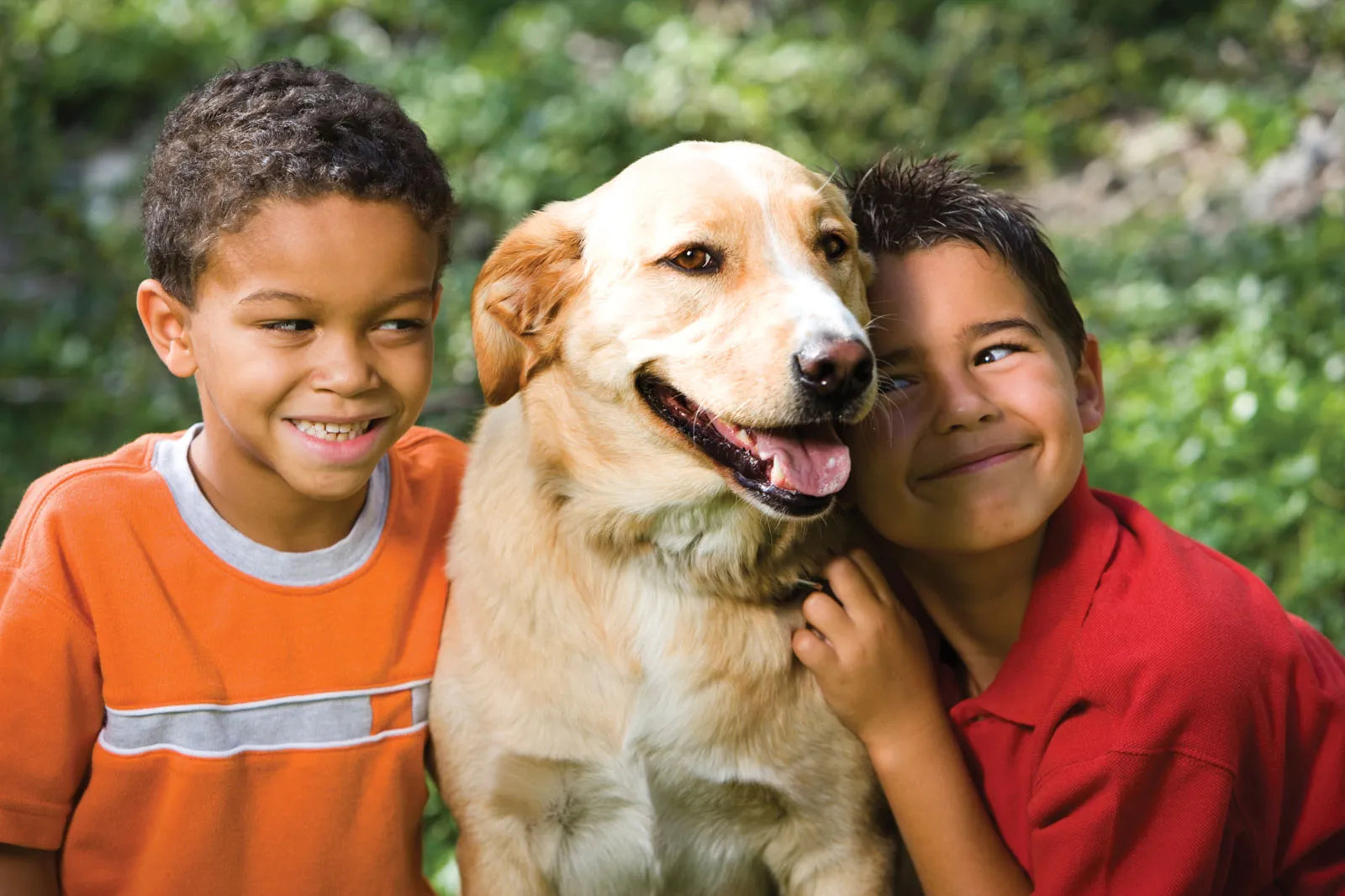
The Trail Medic: Essential Items for Your Dog's Hiking First Aid Kit
Share
Every trail dog owner knows that adventure comes with a risk of unexpected scrapes, sprains, or stings. When you are miles from the trailhead, your dog's safety depends entirely on your preparedness. A well-stocked and organized canine first aid kit is not just an accessory—it's a critical piece of gear that can turn a backcountry emergency into a manageable incident.
Here is a checklist of the must-have items for your Trailtrotpet First Aid Kit, categorized by the most common trail issues.
1. Wound Care & Paw Protection
Paw injuries—cuts, abrasions, or torn pads—are the most frequent trail mishaps. Proper wound care is vital to prevent infection.
| Item | Purpose | Tip |
| Self-Adhering Wrap (Vet Wrap) | Secures bandages without sticking to fur; provides light support for sprains. | Always keep a minimum of two rolls. |
| Sterile Gauze Pads & Rolls | Cleaning wounds, absorbing blood, and padding injured paws. | Use as a cushion before applying Vet Wrap. |
| Antiseptic Wipes/Spray | Cleaning small cuts, scrapes, and insect bite areas. | Avoid alcohol-based wipes near open wounds; use a saline or chlorhexidine wipe. |
| Triple Antibiotic Ointment | Prevents infection in minor cuts. | Use single-use packets to minimize bulk and maintain sterility. |
| Styptic Powder | Stops bleeding quickly from minor nail breaks or small cuts. | Essential for quickly clotting bleeding nail quicks. |
| Disposable Booties | Protects a bandaged paw from dirt and moisture, or protects sensitive pads on rough terrain. | One size larger than usual can accommodate a bandage. |
2. Tools & Emergency Restraint
These non-medicinal items are essential for safe assessment and management of an injured or distressed dog.
-
Tick Remover or Fine-Pointed Tweezers: For safe and complete removal of ticks, splinters, and thorns.
-
Blunt-Tipped Scissors or Shears: Used to cut gauze, tape, or to safely cut away fur from a wound site.
-
Digital Thermometer: A dog’s normal temperature is $101^\circ \text{F}$ to $102.5^\circ \text{F}$. High readings ($>104^\circ \text{F}$) signal a heat emergency.
-
Emergency Slip Leash/Muzzle: A frightened or injured dog may bite, even its owner. A slip lead can be temporarily used to create an emergency soft muzzle, or pack a dedicated soft nylon muzzle.
-
Emergency Blanket/Sling: Can be used to keep a dog warm (preventing shock) or as a makeshift stretcher to carry a non-walking dog.
3. Medications (Consult Your Vet First!)
Never administer human or over-the-counter medications to your dog without consulting your veterinarian for the correct dosage and administration instructions.
-
Antihistamine (Diphenhydramine): Used for allergic reactions from bee stings, snake bites, or insect/plant exposure. (Know your dog's dosage beforehand.)
-
Pet-Safe Pain Reliever: Only if prescribed by your vet for short-term pain relief. Never give your dog human NSAIDs (e.g., ibuprofen).
-
Oral Syringe: Makes administering liquid medications or rinsing wounds much easier.
Your Emergency Protocol: The 3 P’s
-
Prevent: Condition your dog's paws, check your gear, and pre-hike research the trail for hazards.
-
Pause & Protect: If an injury occurs, immediately stop, move to a safe spot, and assess the injury. Use the muzzle/restraint if your dog is in pain.
-
Proceed: Apply basic first aid, and if the injury is severe (heavy bleeding, broken bone, deep puncture), focus on stabilizing the dog for the journey back to the car and the nearest vet. Always carry the phone number and directions to the nearest animal emergency hospital.






